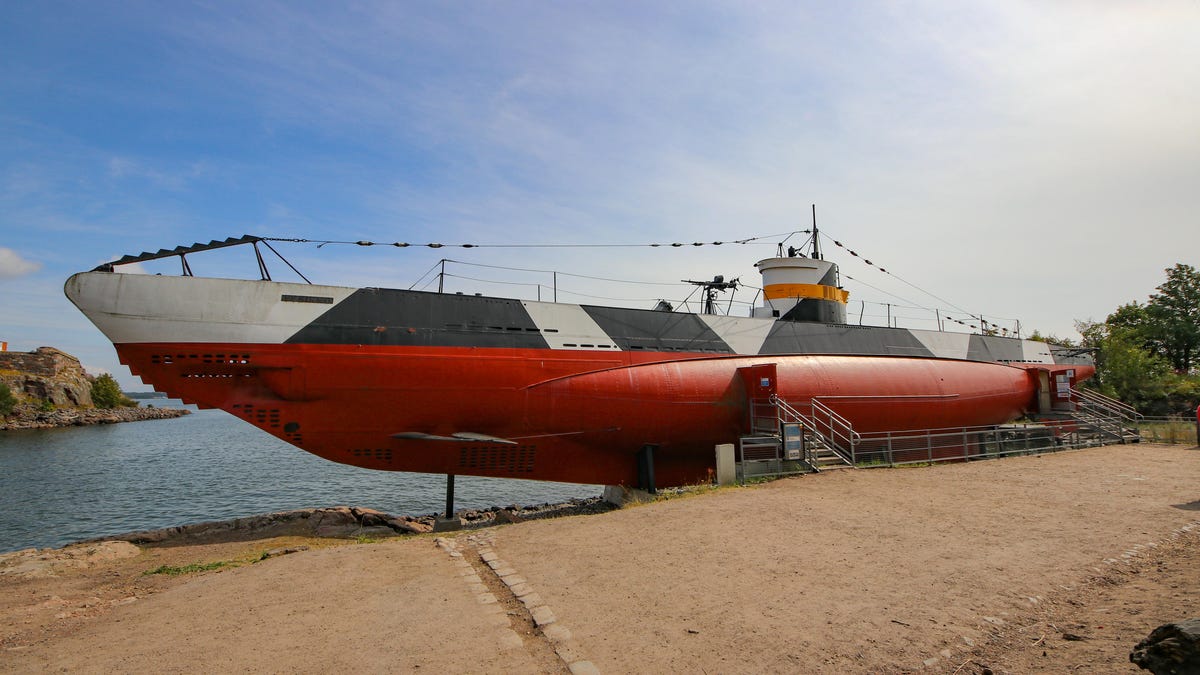 Why You Can Trust CNET
Why You Can Trust CNET Beneath the Baltic: Exploring Estonian and Finnish submarines
The FNS Vesikko and EML Lembit are pre-WWII submarines with fascinating histories. Here’s a look inside.

When you think of undersea naval power, the United States and China probably come to mind. Likely Britain and France, too. But Estonia and Finland? I'd wager these two Baltic Sea countries aren't high on your submarine list. But, crammed between Germany and Russia, and bordering a body of water with a pivotal history, each has a small navy that has operated submarines.
Today, both countries have WWII-era subs on display in museums. Though both facilities are closed during the coronavirus pandemic, they show how each boat played a small part in the much larger conflict.
Here's how they look inside.
FNS Vesikko
The submarine Vesikko was built in Turku, Finland, in 1933. Though originally built for a German front company based in the Netherlands (at the time, Germany was banned from building submarine following the Treaty of Versailles), she was purchased by the Finnish Navy in 1936. The Vesikko was quite advanced for her day, and was the prototype for Germany's Type II submarine.
Her first combat patrols were against the Soviet Union, sinking a merchant vessel in the Gulf of Finland. After Finland signed an armistice with Moscow ending the Winter War, the Vesikko was poised to fight against Nazi Germany for the Allies, but never saw further action. After WWII, all Finnish submarines were sold and scrapped except the Vesikko. For decades she was kept in a drydock, awaiting future use as a training vessel. That never happened, so instead she was instead converted to a museum ship.
Today the Vesikko sits just above the water on one of the islands of Suomenlinna, a sea fortress just south of Helsinki. You arrive via ferry, greeted by cafes and a small grocery store. After weaving your way around current Naval academy barracks, museums and the buildings of a minimum security prison, you can find the Vesikkko high on posts just off a rocky beach. The inside is cramped, even for a submarine. It's so tiny -- the Vesikkko is one of the smallest subs you can tour in the world -- inside at either end you can stretch your arms out and touch both sides of the hull.
EML Lembit
Across the Gulf of Finland lies Tallinn, Estonia. Though now proudly a part of the European Union, the country's years occupied by the Soviet Union still show through in the design of many buildings, like the incredible concrete ziggurat Linnahall. Just a little outside of the city center is Seaplane Harbour, named for the restored 100-year-old hangars that hold most of the museum's exhibits.
The British built the Lembit in Barrow-in-Furness, United Kingdom three years after the Vesikko first sailed. Both in size and design, it's far closer to the subs of WWII than WWI. At the start of the war the Lembit played a key role in the Estonian Navy. But after the Russians invaded, the Lembit became part of the Soviet Baltic fleet and went on sink several German vessels. After the war the Soviets studied the Lembit's design and eventually restored her to be a museum ship in the '80s. After the fall of the USSR, the sub was restored again and eventually brought to its current location.
You enter through a loading hatch at the bow. The same hatch is the exit, causing a bit of a traffic jam if it's busy. Perhaps most interesting is the lavish wardroom decked out in red velour. In the center, the bridge has had much of its equipment removed, but some of the 1930s technology still remains.
Protectors of the north
Taken on their own, these subs are a fascinating look at pre-WWII submarine design. Few boats from that era remain. Just as interesting, is the part they played in the complex story of Finland and Estonia in WWII and beyond.
Visiting the Vesikko is easy… in the summer. The rest of the year it's closed. Ferries go to Suomenlinna all day long during the warm months, and there's a lot to explore besides the sub.
Lembit and Seaplane Harbour are walkable from the center of Tallinn, past the Linnahall ziggurat and Patarei prison museum. Behind the museum you can also tour the 105-year-old steam-powered ice breaker Suur Toll.
But in both cases, you're going to have to be headed to Northern Europe. If that's not in your plans, check out the gallery above.
As well as covering audio and display tech, Geoff does photo tours of cool museums and locations around the world, including nuclear submarines, aircraft carriers, medieval castles, epic 10,000-mile road trips and more.
Also check out Budget Travel for Dummies, his travel book, and his bestselling sci-fi novel about city-size submarines. You can follow him on Instagram and YouTube.

